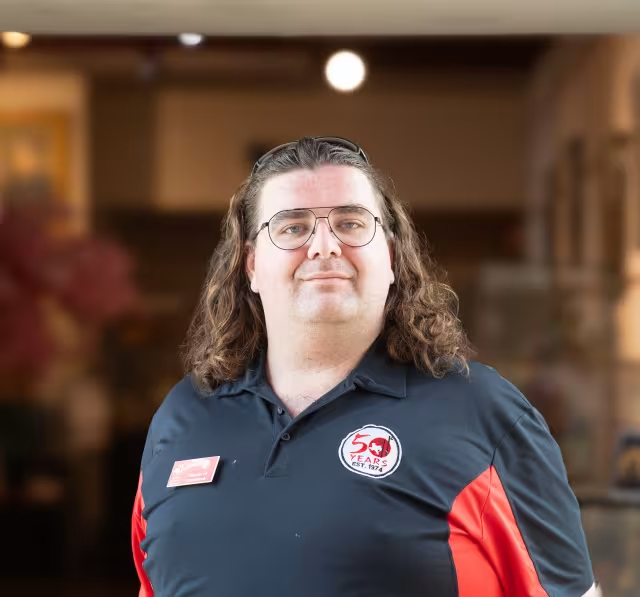Richard Hafemeister: From Tour Guide & Animal Handler to President & CEO
Richard Hafemeister’s career in tourism and education began humbly with reptiles, feeding schedules, and early morning school tours. Now the President and CEO of the Texas State Museum of Asian Cultures & Education Center, Richard’s path has been anything but linear, shaped by a mix of curiosity, operational savvy, and a talent for logistics that has supported the growth of some of Corpus Christi’s most beloved institutions.
His interest in education and tourism began with a high school internship, which helped spark a lifelong passion for connecting people to learning experiences, but it was at the Texas State Aquarium where he really began to find his footing by giving tours, working with animals, and learning what it took to support large-scale visitor experiences. That early exposure gave him an appetite for hands-on work and set the tone for what would become a career rooted in education, problem-solving, and service. Richard later joined the South Texas Botanical Gardens & Nature Center, where he quickly added more skills under his belt.
“It was a two-man operation,” he recalls. “So the minute the boss was out, I was acting department head, handling everything that didn’t require calling him.”
Whether it was stepping in during staff absences or covering for injuries, Richard learned how to make things work with limited resources, a lesson that would serve him well for years to come. In his early 20s, he already had years of professional experience across multiple tourism spaces, from school programming and education to equipment management and scheduling.
Those formative years instilled a practical understanding of both visitor engagement and behind-the-scenes operations, something he brought with him when he joined the Asian Cultures Museum. Originally hired to handle logistics, he quickly rose through the ranks, eventually managing operations during the height of the COVID-19 pandemic. Drawing on years of experience in quarantine protocol from his animal care background, Richard designed and implemented a safety plan within weeks ensuring minimal disruption and continued access for visitors. That readiness helped set the tone for his leadership.
“I thought I wanted to go into research, but what I really loved was education, and what I was good at was logistics and keeping things running,” he says. “Operations is about lowering barriers so people can truly experience and learn from what you’re offering.”
Under Richard’s leadership, the museum has not only maintained its operations but expanded its reach and community impact. He’s helped bring in cultural partners from across Texas, giving the museum a vibrant, living presence. From Japanese drumming groups and Filipino cooking classes to Vietnamese storytelling and Korean tea ceremonies, the museum now acts as a central hub for a diverse range of educational experiences.
“We’ve built something where the museum provides the space, the logistics, the structure and our partners provide the culture,” he explains. “That model gives people ownership and helps us represent Asia in a way that’s authentic and collaborative.”
What Richard enjoys most is seeing people, whether volunteers, schoolchildren, or cultural educators, discover their ability to teach and share knowledge. For him, that’s what makes the work matter: watching someone find confidence in their voice and pride in their heritage. Reflecting on the role tourism plays in the city’s overall identity, Richard sees it as more than an economic engine. He views it as a democratizing force: a way to share stories, open doors, and ensure a diversity of perspectives is seen and celebrated.
“Tourism touches everything,” he says. “It’s one of the most meritocratic forms of economic opportunity because everyone can be part of it from museums and food trucks to musicians and small businesses.”
Through it all, Richard remains grounded in the lessons learned from every role he’s held, and driven by the belief that education and accessibility go hand in hand. His work has helped shape the museum into a dynamic, community-powered institution, and his leadership ensures it continues to evolve with purpose.




